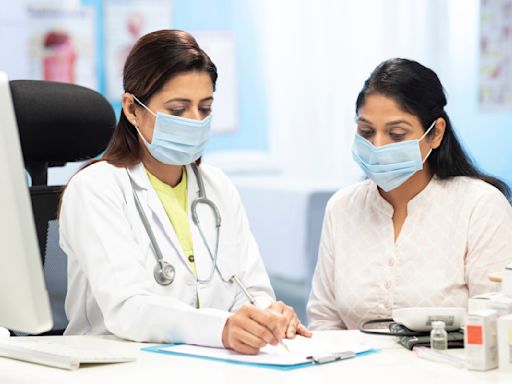Search results
Gonorrhea. 9 /15. Gonorrhea spreads through unprotected vaginal, oral, or anal sex. Common symptoms include discharge from the vagina or penis. It may also hurt when you pee. Women may have pain ...
Infectious diseases are illnesses caused by harmful agents (pathogens) that get into your body. The most common causes are viruses, bacteria, fungi and parasites. Infectious diseases usually spread from person to person, through contaminated food or water and through bug bites. Some infectious diseases are minor and some are very serious.
Feb 18, 2022 · Symptoms. Each infectious disease has its own specific signs and symptoms. General signs and symptoms common to a number of infectious diseases include: Fever. Diarrhea. Fatigue. Muscle aches. Coughing.
May 6, 2024 · Infectious Diseases. Infectious diseases are disorders caused by organisms — such as bacteria, viruses, fungi or parasites. Many organisms live in and on our bodies. They're normally harmless or even helpful, but some organisms under certain conditions may cause disease.
University of Utah Health offers an Infectious Disease Clinic to diagnose and treat common infectious diseases. We have a team of physicians with specialized knowledge in several different areas of infectious diseases: HIV/AIDS. Orthopedic infections. Travel and tropical medicine. Infectious diseases in patients with a compromised immune system.
Jun 19, 2024 · Infectious diseases doctors in this division help people with HIV, bone infections, and infections related to complications of cancer, transplant, critical care and many other conditions. Infectious diseases services are also provided to children at Mayo Clinic's campus in Rochester, Minnesota. Pediatric infectious diseases specialists of the ...
A yeast infection is a disrupted balance of good bacteria and yeast around the vagina that causes itching and discomfort. Learn about causes and treatment. Diseases caused by the introduction of infectious agents such as bacteria, viruses, parasites, or fungi into the body.
Nov 17, 2023 · Common viral, bacterial, fungal, and protozoa diseases include: Rhinoviruses. Rhinoviruses are a group of viruses that are the most common cause of the common cold.Symptoms of a cold may include ...
Infectious Diseases. Coronavirus (COVID-19) Mononucleosis Meningitis Lyme Disease Respiratory Infections Foodborne Infections Rare Infections Travelers' Health. More. Common infectious diseases like the flu and rarer ones like Whipple's disease can be prevented. Learn about them, their symptoms, treatment, and more.
- www.nih.gov
- › …
- › What We Do
- › NIH…Turning Discovery Into Health®
Nov 16, 2023 · Infectious Diseases. A long filopodial extension connects an uninfected T cell (blue) and an HIV infected T cell (yellow). Data from focused ion beam scanning electron microscopy (FIB-SEM). Donald Bliss, National Library of Medicine; Sriram Subramaniam, NCI. Each year, about 23 million Americans visit a doctor’s office or clinic seeking ...
Feb 18, 2022 · Laboratory tests. Many infectious diseases have similar signs and symptoms. Samples of body fluids can sometimes reveal evidence of the particular microbe that's causing the illness. This helps the doctor tailor treatment. Blood tests. A technician obtains a sample of blood by inserting a needle into a vein, usually in the arm.
Jun 10, 2024 · There are four main types of germs: Bacteria are one-celled germs that multiply quickly. They may give off toxins, which are harmful chemicals that can make you sick. Strep throat and urinary tract infections are common bacterial infections. Viruses are tiny capsules that contain genetic material. They invade your cells so that they can ...




